Chisel
彫刻刀
Chōkokutō
The chisel (chōkokutō), a carving knife used in woodcut printing, is a wood-handled, steel-bladed tool for carving into printing blocks.
Chisels take their names from their tip shapes. In general, there are four widely used kinds of chisel: the cut-out chisel (kiridashi), the flat chisel (hiratō), the U gouge (marutō or gantō), and the V gouge (sankakutō). In addition to these, there are also the double-bladed chisel (ryōba), the rounded chisel (magaritō), the registration chisel (kentōnomi), the clearing chisel (sarainomi) and other kinds of nomi chisels. The blade edge of the cut-out chisel (kiridashi)—also called the woodblock chisel (hangitō) or small chisel (kogatana)—is diagonally shaped and used for carving out profiles in drawing sections. The kiridashi was the most commonly used chisel back in the heyday of the traditional ukiyoe woodblocks. The flat chisel (hiratō), which has a flat blade edge, is distinguished from the aisuki, which has an arc-shaped blade. The blade section of each is flat. They are used to clean out the superfluous parts after carving with a kiridashi or the U gouge (marutō or gantō), or in the technique called “woodblock shading” (itabokashi), which carves shallow and diagonal cavities into the block surface. The U gouge (marutō or gantō) has a blade section that is semicircle in shape. Rounded chisels whose blade widths are especially narrow are called komasuki, whose distinguishing feature is an ability to make fine carvings. The U gouge is good for carving away the surrounding superfluous parts after carving with the kiridashi and also for carving curved profiles. In addition to these, chisels with shallow semicircles are called “shallow U gouge” (asagantō), while chisels with deep semicircles are called “deep U gouge” (fukagantō). The wide-bladed “shallow U gouge” is convenient for cleaning out superfluous sections. The V gouge chisel (sankakutō), which has a blade section shaped like the letter “V,” is used to carve sharp, straight lines. An artist can carve thick lines by digging the blade tip deeply into the block surface or carve thin lines by making superficial cuts. Moreover, the “V”-shaped blade features numerous types of interior angles, which determine the thickness of the carved lines.
Whenever you carve a block with any of the chisels, be careful to carve so that the section of the carved block form a kind of trapezoidal “flared fan” (suehirogari). Doing this prevents splintering. After using the chisel, sweep up the carved shavings, wipe the oil lightly with a waste cloth, and store the chisel in a dry environment. There are two types of chisel handles: one is called the jōshukō, which holds the blade in a long handle made of magnolia (hōnoki), and the other is called the sakurafutatsuwari, which holds the blade between two pieces of cherry tree wood and keeps it in with a metal clasp. Students also use types that have protective rubber-made handles, which are also currently sold on the market. The blade section of the chisel comprises two metals: iron (jigane) and steel (hagane); when the blade-tip is chipped or the cut becomes dull, it is advisable to sharpen the blade with a grindstone before using. Chisels are available for purchase at knife shops or art supply stores that carry block print materials.
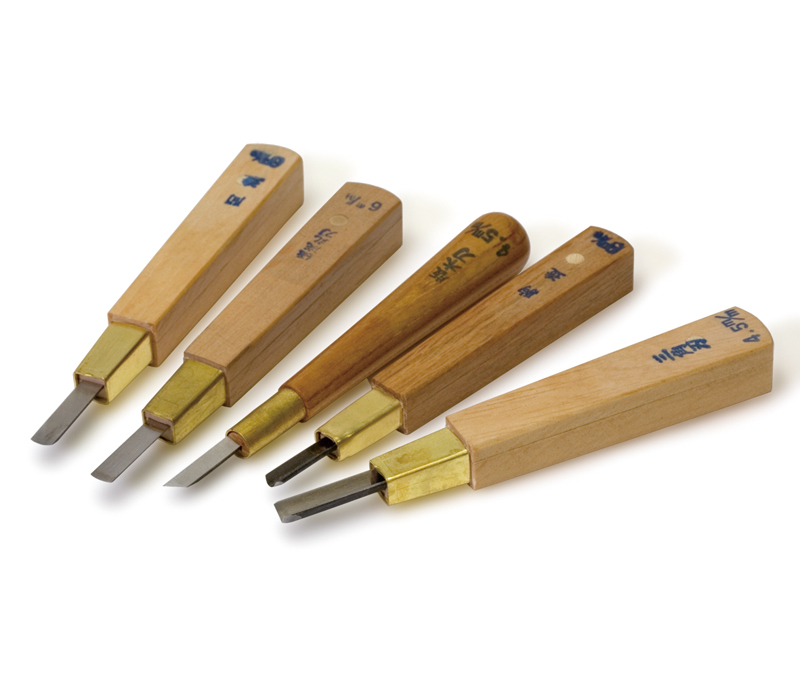
- Chisels (close-ups) and cross-sections of chiseled plates
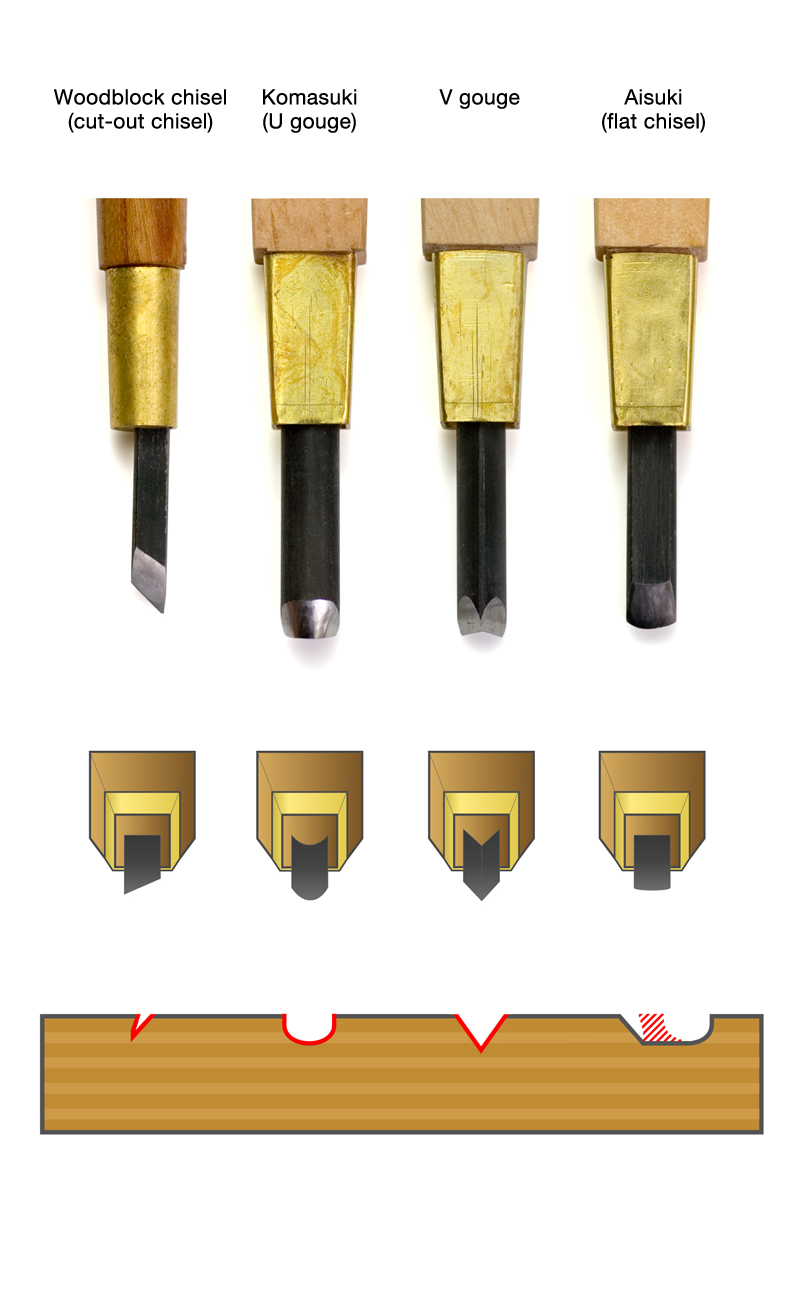
- How to hold a chisel
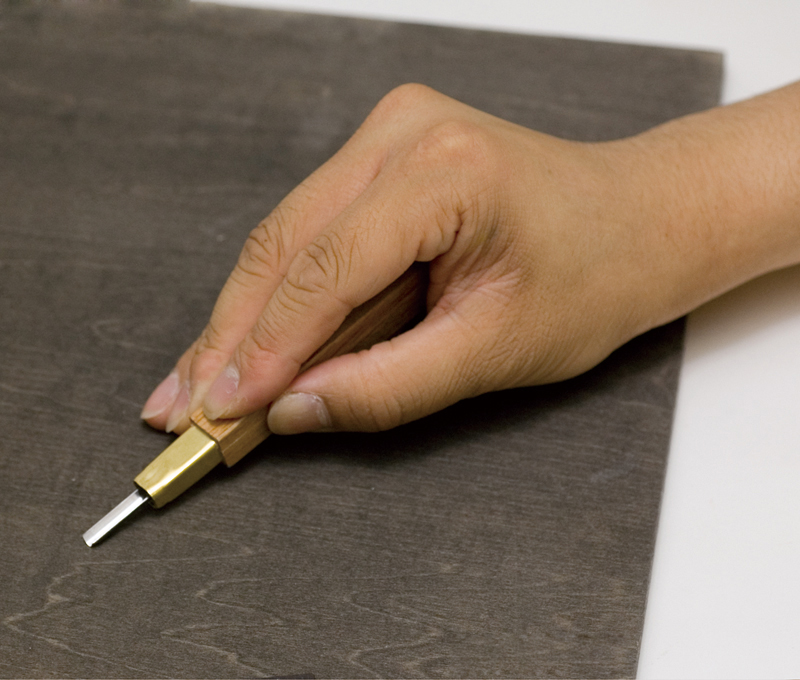 With a short handle
With a short handle 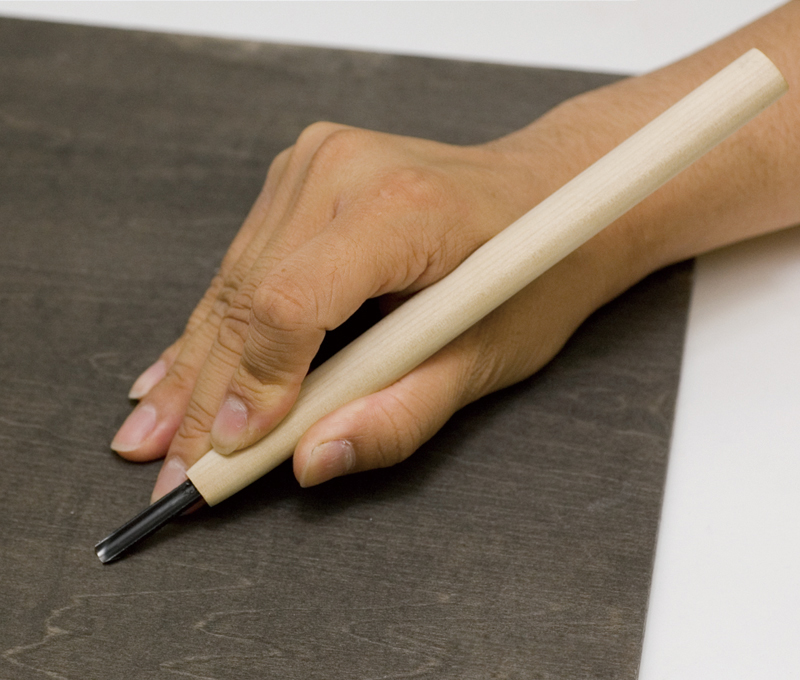 With a long handle
With a long handle- Types of chisel handles
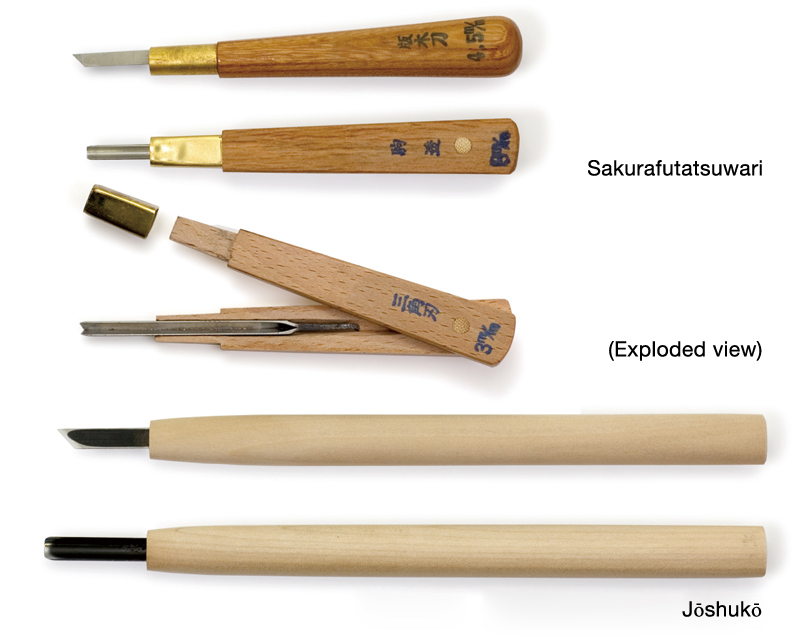
- Examples of different chiseling styles
 Woodblock chisel (cut-out chisel)
Woodblock chisel (cut-out chisel) 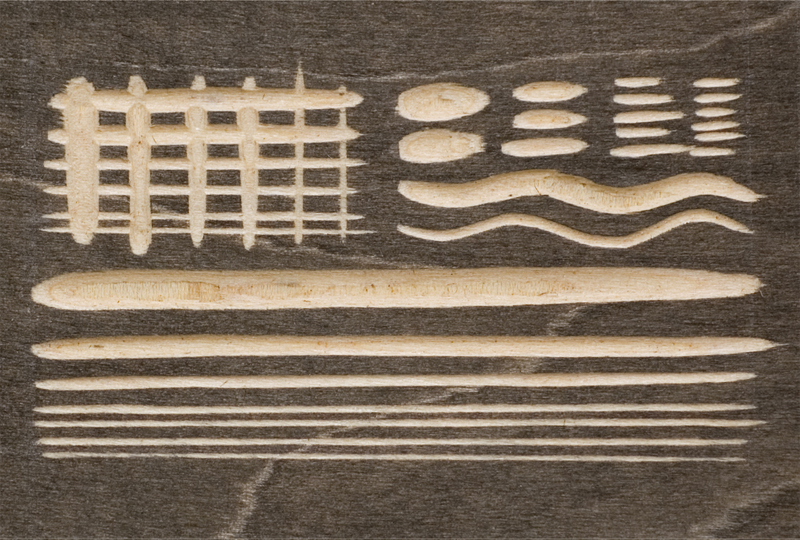 Komasuki
Komasuki V gouge
V gouge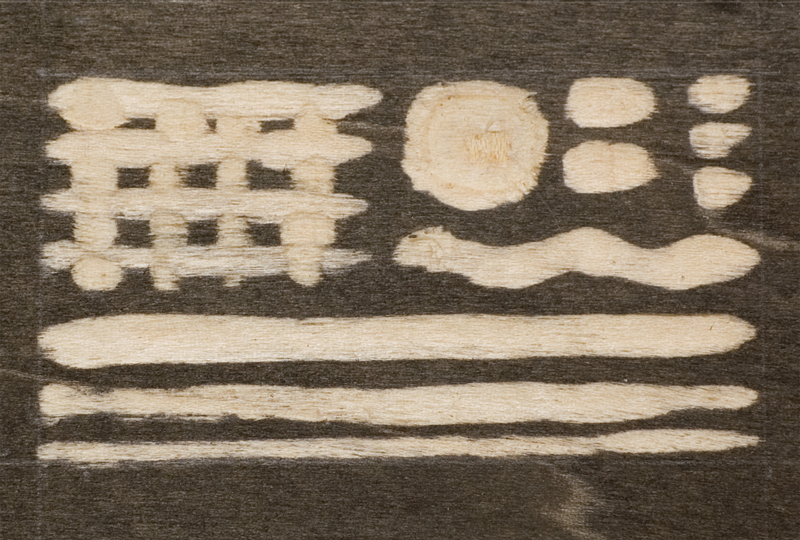 Aisuki
Aisuki
